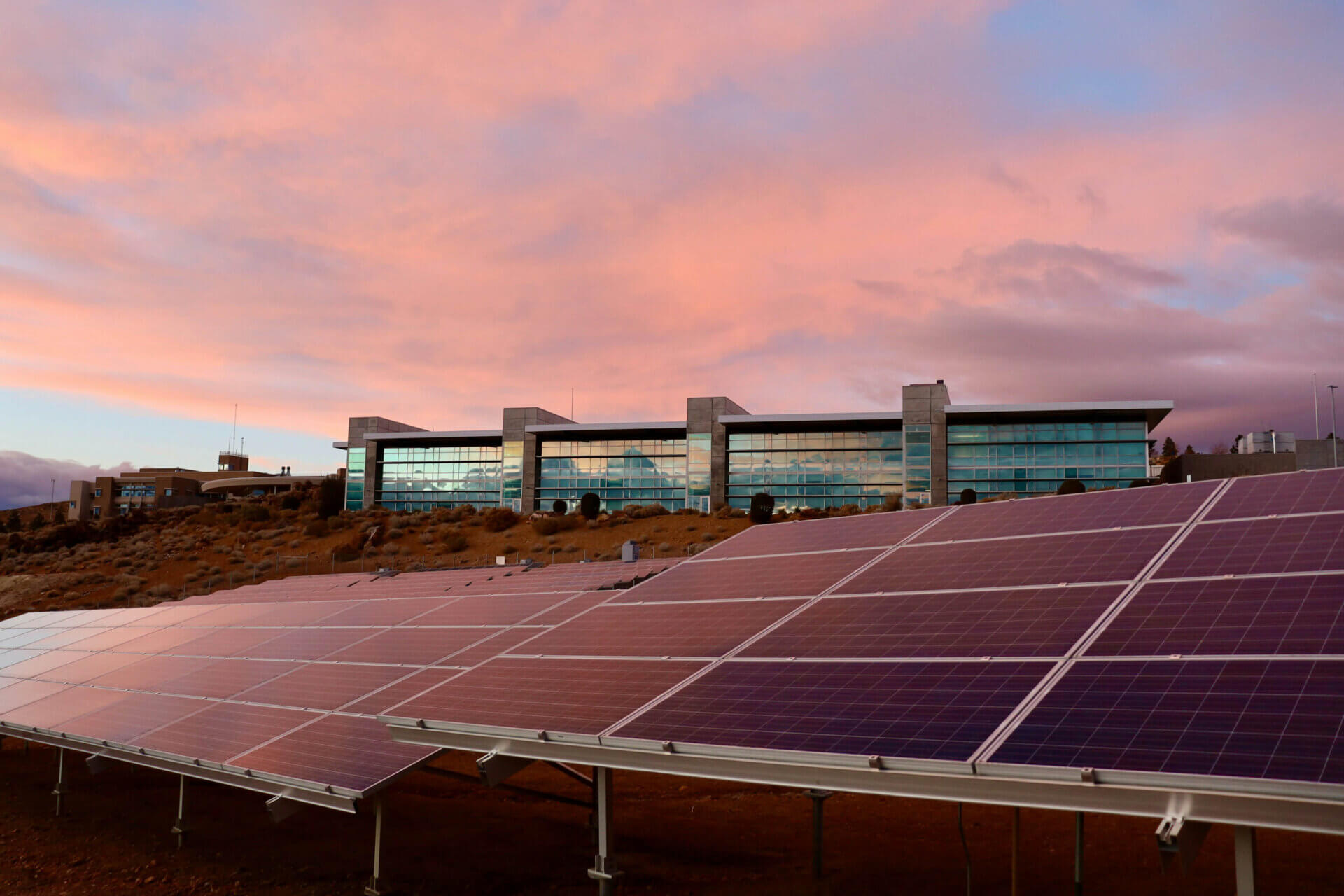Forty percent. Is it a little or a lot? Is it good or bad? That depends on the context. For example, 40% is…
- The percentage of the world’s coffee produced by Brazil (delicious).
- The percentage of marriages that end in divorce (sad).
- The percentage of global wealth owned by the 1% (enraging).
- The batting average that hasn’t been achieved since Ted Williams hit it with the 1941 Boston Red Sox (aspirational).
- The percentage of the world’s carbon emissions generated by the construction industry (ouch!).
But we’re working on it. In the quest for sustainability, the construction industry is undergoing a significant transformation. The adoption of green building practices is no longer just a trend but a necessity, driven by global environmental concerns and the demand for energy-efficient, sustainable infrastructures. Construction management software emerges as a powerful ally in this green revolution, providing the tools and insights necessary for construction companies to support sustainable building practices.
Let’s explore how construction management software is becoming a cornerstone for eco-friendly construction projects.
5 Types of Software Used in Sustainable Construction Management
Construction software facilitates comprehensive project management, resource optimization, and effective planning—all crucial for sustainable building. To make construction sites more sustainable, several types of software are employed, each serving different aspects of construction and sustainability goals. Here’s a look at some of the key types of software used in this area:
1. Project Management Software
This type of software helps streamline project execution, ensuring that resources are used efficiently, timelines are met, and waste is minimized. Sustainable project management software often includes features for resource tracking, scheduling, and collaboration, which are crucial for maintaining sustainable practices throughout the construction lifecycle.
2. Material Management Software
This software helps in tracking and managing the use of materials on a construction site, promoting the use of sustainable, recycled, and eco-friendly materials. It can optimize material ordering and usage, reduce waste, and ensure that sustainable materials are utilized effectively throughout the construction process.
3. Waste Management and Recycling Software
These applications assist in planning and tracking waste generation, segregation, and disposal, encouraging recycling and proper waste management on construction sites. They help in reducing the environmental impact of construction waste and in complying with regulatory requirements for waste management.
4. Water Management Software
This type of software aids in monitoring and managing water use on construction sites, promoting efficient use of water and supporting the implementation of water-saving practices such as rainwater harvesting and greywater recycling.
5. Compliance Software
This software helps construction companies adhere to all sorts of regulations, including environmental, and achieve sustainability certifications like LEED (Leadership in Energy and Environmental Design), BREEAM (Building Research Establishment Environmental Assessment Method), or WELL Building Standards, which are indicative of sustainable building practices.
By integrating these various types of software, construction companies can enhance the sustainability of their jobsites, contributing to the broader goal of reducing the construction industry’s environmental impact and promoting sustainable development.

9 Categories of Construction Sustainability Software
Software is not just a tool for efficiency; it’s also a key player in making construction jobsites more environmentally sustainable. Here are nine ways how software contributes to sustainability in construction:
1. Resource Optimization
Software tools provide sophisticated methods for tracking and managing materials, ensuring that every resource is used efficiently, reducing unnecessary waste and surplus. For example, by analyzing project data, software can predict the exact amount of materials needed, preventing over-purchase and minimizing leftover materials that contribute to waste.
2. Energy Efficiency Analysis
Energy modeling software enables architects and engineers to create more energy-efficient building designs. By simulating different scenarios, these tools can predict how buildings will perform under various conditions, helping to optimize the design for energy use. This not only reduces the operational carbon footprint of buildings but also ensures long-term sustainability and cost savings.
3. Waste Management
Advanced software solutions help manage the waste generated on construction sites more effectively. They can track the amount of waste produced and facilitate the sorting and recycling process. By optimizing waste collection schedules and routes, software can also reduce the carbon emissions associated with transporting waste materials.
4. Sustainable Material Selection
Software platforms can provide access to databases of sustainable materials, allowing project managers to make informed decisions about the materials they use. These platforms often include information on the lifecycle environmental impact of materials, including their carbon footprint, recyclability, and energy consumption during production.
5. Carbon Footprint Tracking
Some software tools are specifically designed to calculate and monitor the carbon emissions of construction projects. They can track emissions from machinery, transport, and material production, helping companies set reduction targets and implement strategies to achieve these goals, leading to more sustainable construction practices.
6. Compliance and Reporting
Environmental compliance software streamlines the process of adhering to regulations and standards. It can automatically update with the latest regulatory changes and alert managers to potential compliance issues. This not only helps avoid penalties but also ensures that projects contribute positively to environmental sustainability.
7. Remote Monitoring and Management
By allowing project managers and teams to monitor and manage sites remotely, software reduces the need for frequent travel to the site, thereby lowering the carbon emissions associated with transportation. Remote monitoring tools can track the performance of machinery and the progress of construction activities, ensuring that resources are used efficiently.
8. Enhanced Equipment Utilization
Software can optimize the scheduling and use of construction equipment, ensuring that each piece of machinery is used efficiently and for the right tasks. This reduces idle time and overuse, leading to lower fuel consumption and reduced emissions. Additionally, better equipment management extends the life of machinery, decreasing the environmental impact associated with manufacturing new equipment.
9. Lifecycle Analysis
Lifecycle analysis software provides a comprehensive view of the environmental impact of construction projects from start to finish. It evaluates the sustainability of building materials, construction practices, and the long-term environmental effects of the project. This analysis helps construction firms make informed decisions that align with sustainability goals, such as choosing materials with lower environmental impacts or adopting construction methods that reduce emissions.
By leveraging software in these ways, construction companies can significantly enhance the environmental sustainability of their jobsites, leading to greener, more efficient, and more responsible construction practices.
Top 10 Sustainable Construction Management Software Solutions
1. Corfix
Sustainability Category: Remote Monitoring and Management & Resource Optimization
Description: A comprehensive cloud-based construction project management software that was designed to optimize resources, streamline workflows, and enhance efficiency on jobsites.
2. SimaPro
Sustainability Category: Lifecycle Analysis
Description: A lifecycle assessment software that evaluates the environmental impact of construction projects, helping firms make informed decisions to minimize their ecological footprint.
3. Fleet Complete
Sustainability Category: Enhanced Equipment Utilization
Description: A fleet management software that optimizes construction equipment scheduling, reduces idle time, and improves fuel efficiency, contributing to sustainability goals.
4. Fieldwire
Sustainability Category: Remote Monitoring and Management
Description: A construction management software with remote monitoring capabilities, allowing teams to track progress, manage tasks, and reduce on-site visits, thus lowering carbon emissions.
5. EcoOnline
Sustainability Category: Compliance and Reporting
Description: An environmental compliance software that helps construction companies stay compliant with regulations, manage environmental risks, and report on sustainability efforts.
6. CarbonCure
Sustainability Category: Carbon Footprint Tracking
Description: A software platform that tracks and monitors carbon emissions from concrete production, helping construction companies reduce their carbon footprint.
7. Tally
Sustainability Category: Sustainable Material Selection
Description: A Revit plugin that provides lifecycle analysis and environmental impact data for building materials, aiding in informed decision-making for sustainable material selection.
8. Waste Logics
Sustainability Category: Waste Management
Description: A waste management software designed for construction sites, it helps track, manage, and optimize waste collection and recycling processes, reducing environmental impact.
9. Autodesk Insight
Sustainability Category: Energy Efficiency Analysis
Description: This energy modeling software allows architects and engineers to analyze building designs for energy efficiency and sustainability, helping optimize energy use during construction and operation.
10. Procore
Sustainability Category: Resource Optimization & Remote Monitoring and Management
Description: This construction project management software includes features for tracking and managing materials, helping optimize resource use and reduce waste.
Conclusion: Paving the Way for a Sustainable Future
Construction software is not just a tool for operational efficiency; it’s a catalyst for sustainable transformation in the construction industry. By integrating these digital solutions, companies can not only meet the current demands for green building but also lead the way in shaping a sustainable future.
The journey towards sustainable construction is complex, yet with the right technology, like construction software, companies can navigate this path more effectively, making sustainable building practices not just an aspiration but a reality.
As we strive for a greener future, the role of construction software in supporting sustainable practices becomes increasingly vital. It enables the industry to build not just faster and more efficiently, but also in a way that respects and preserves our environmental resources for generations to come.


